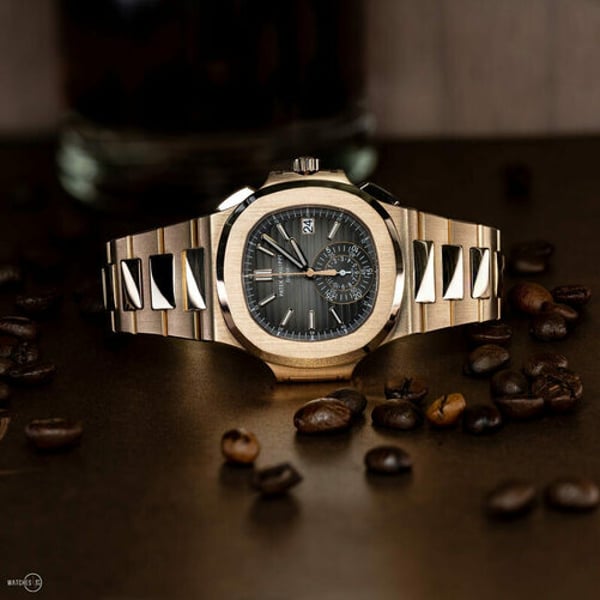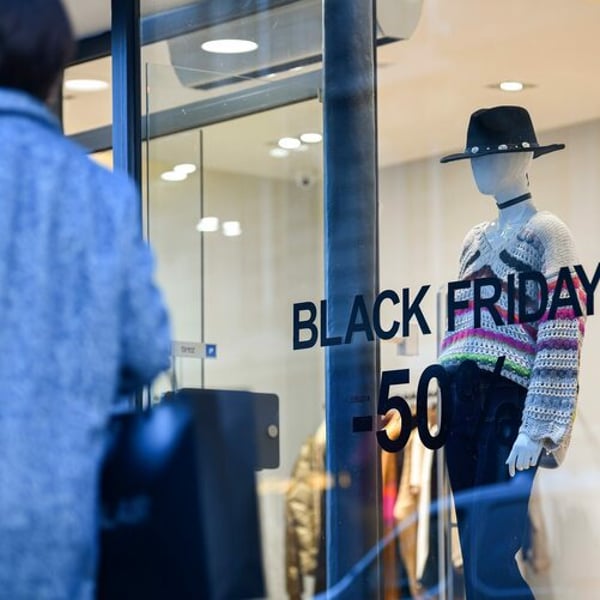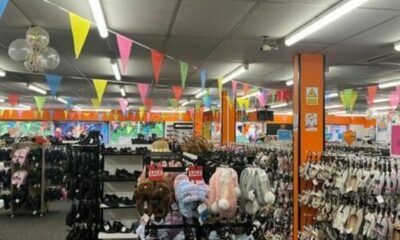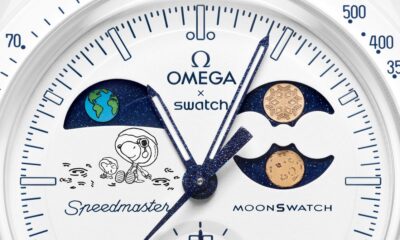Fashion
Used Rolexes, Pateks are bright spot in struggling watch world

By
Bloomberg
Published
August 15, 2025
The market for used luxury timepieces recorded its best half-year performance since early 2022, providing a bright spot in an otherwise grim landscape for high-end watches.
The Bloomberg Subdial Watch Index, which tracks the 50 most-traded timepieces by transaction value, gained 5.3% in the first half of 2025 — and extended that recovery in the third quarter. Rolex’s gold Daytona 116508 and Patek Philippe’s Aquanaut 5167A were among the top performers.
The rebound is modest compared with the pandemic-era boom, when housebound consumers, flush with cash, splashed out on fancy timepieces. Still, it comes as new watch sales face US tariffs — including a 39% levy on Swiss exports — and stubbornly low demand in Asia.
The second hand market is also benefiting as record gold prices drive up the cost of new watches and shoppers look to avoid delays that can occur when seeking to buy a new model, according to Christy Davis, founder of London-based Subdial, a watch dealer and trading platform.
In boutiques, high-demand new models are often tightly allocated, forcing would-be buyers to wait months or longer for delivery, while secondary platforms offer immediate access to a broader range of pieces, said Davis.
The increased prices for Rolex’s gold Daytona come during a boom for bullion amid tariffs and wars in Ukraine and the Middle East, while Patek Philippe’s Aquanaut is outperforming the Swiss brand’s hallmark Nautilus sports models, perhaps underscoring a growing trend toward restrained opulence, Davis said.
“There’s definitely something around people looking for more quiet luxury these days, and the Aquanaut is that when compared with the Nautilus.”
The primary watch market, by contrast, is suffering. Swiss watch exports dropped 5.6% in June, extending a year-long rout that’s seen declines in shipments to the US, the biggest export market, along with Japan and Hong Kong.
Watchmakers like Rolex, Patek Philippe and Audemars Piguet are also contending with the consequences of a stronger Swiss franc and a broader weakness in luxury demand. Swatch Group AG — whose high-end brands include Omega and Blancpain — reported a 7.1% drop in sales in the first half of the year, which it said was “exclusively attributable” to China, including Hong Kong and Macau.
Trump’s trade war has exacerbated the pain. Switzerland is reeling from the US imposition of the 39% tariff, the highest in the developed world. While that levy has now taken effect, the country is keeping up efforts to negotiate with the US, raising the prospect that it could yet change.
Fashion
U.S. Black Friday online sales hit record $11.8 billion, Adobe reports

By
Reuters
Published
December 1, 2025
American shoppers spent a record $11.8 billion online on Black Friday, up 9.1% from last year, final data from Adobe Analytics showed.
Adobe Analytics, which tracks over 1 trillion U.S. retail site visits, expects shoppers to spend $5.5 billion on Saturday and $5.9 billion on Sunday, up 3.8% and 5.4% from a year earlier respectively.
Separately, software firm Salesforce reported that American consumers had spent $18 billion on Black Friday purchases, up 3% from a year ago, with luxury apparel and accessories among the most popular categories.
Although U.S. consumers spent more this Black Friday compared to last year, price increases hampered online demand, according to Salesforce, with shoppers purchasing fewer items at checkout compared to last year.
At physical stores, the bargain-chasing was relatively subdued on post-Thanksgiving morning, with some shoppers saying they feared overspending amid persistent inflation, trade policy-driven uncertainty, and a soft labor market.
Cyber Monday, traditionally a big day for online deals, is expected to be the season’s biggest online shopping day again, Adobe projects, driving $14.2 billion in spending, up 6.3% from last year.
© Thomson Reuters 2025 All rights reserved.
Fashion
Mielle becomes NFL’s first textured haircare partner

Published
December 1, 2025
Textured haircare brand Mielle has launched a new partnership with the National Football League, marking the League’s first collaboration with a textured haircare company.
The campaign aims to support the millions of NFL fans with textured hair—women now make up about half of the NFL’s fanbase—while addressing the unique hair challenges faced by athletes wearing helmets, including dryness, breakage and frizz.
The partnership expands Mielle’s growing footprint in professional sports and is designed to boost representation, access to high-quality care, and product innovation for textured-hair athletes and fans.
“The NFL is excited to have Mielle, a brand that is committed to performance, community, and empowering fans and athletes, lean into the NFL partnership” said Tracie Rodburg, SVP global partnerships, NFL.
“This partnership aligns with the league’s mission to build lasting connections within our communities nationwide and celebrate the self-expression of our players and fans.”
The P&G brand says the collaboration gives Mielle a major platform to showcase the performance of its dermatologist-reviewed, Skin Health Alliance–accredited formulas under real athletic conditions.
“We’re honored to be the first textured hair care partner of the NFL through our partnership with P&G,” said Monique Rodriguez, founder and CEO, Mielle. “For so many of us, football represents family and community. It’s attending cookouts, tailgates, reconnecting with family and friends, and showing up in your favorite team colors. And for millions of fans, that includes twisting, braiding, and caring for your textured hair before kickoff.”
The announcement is accompanied by a social-first campaign, including the viral “Passing the Phone” video moment featuring talents across the league from including players, executives and agents, to players’ families and on-air talent.
Copyright © 2025 FashionNetwork.com All rights reserved.
Fashion
India’s logistics push puts fashion in the fast lane

The government’s three-year scorecard backs this up. Since its launch in September ****, ULIP has integrated more than thirty logistics and customs systems and clocked over *.* billion (***+ crore) API transactions as of around August ****, effectively treating data flows like rails. LDB, operational since July ****, has cumulatively tracked over ** million EXIM containers across *** inland container depots (ICDs) by around August ****, turning container visibility from a premium add-on into the default. A Transportation Emissions Measurement Tool (TEMT), developed by IIM Bangalore and partners and endorsed by DPIIT, now gives exporters an ISO-*****-aligned way to report logistics emissions, so freight can sit alongside product footprints in sustainability dossiers.
From Map to Mill Gate: What Gati Shakti Has Actually Changed
-

 Sports1 week ago
Sports1 week agoWATCH: Ronaldo scores spectacular bicycle kick
-

 Entertainment1 week ago
Entertainment1 week agoWelcome to Derry’ episode 5 delivers shocking twist
-

 Politics1 week ago
Politics1 week agoWashington and Kyiv Stress Any Peace Deal Must Fully Respect Ukraine’s Sovereignty
-

 Business1 week ago
Business1 week agoKey economic data and trends that will shape Rachel Reeves’ Budget
-

 Tech6 days ago
Tech6 days agoWake Up—the Best Black Friday Mattress Sales Are Here
-

 Politics1 week ago
Politics1 week ago53,000 Sikhs vote in Ottawa Khalistan Referendum amid Carney-Modi trade talks scrutiny
-

 Tech23 hours ago
Tech23 hours agoGet Your Steps In From Your Home Office With This Walking Pad—On Sale This Week
-

 Fashion1 week ago
Fashion1 week agoCanada’s Lululemon unveils team Canada kit for Milano Cortina 2026
















